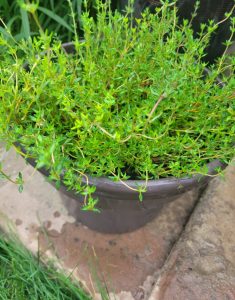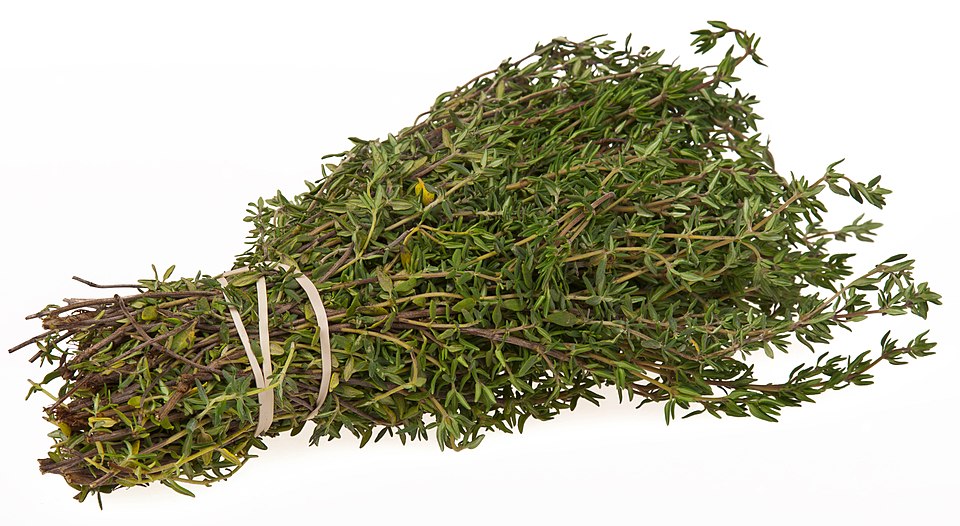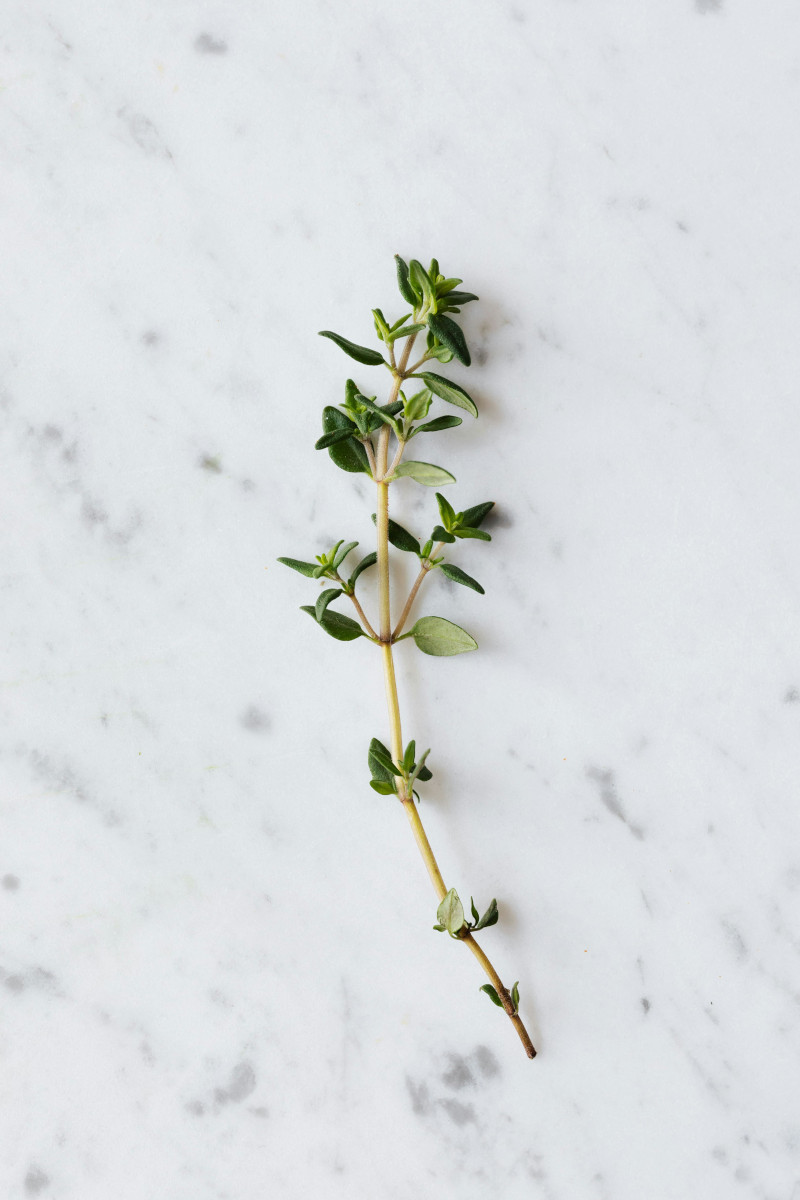Exploring the unsung hero of the herb world.
Thyme isn’t just a seasoning — it’s a story. From ancient remedies to modern kitchens, thyme has been trusted for flavor, healing, and resilience. In this section, we celebrate this overlooked all-star.
A Rescue Mission at Home Depot
Picture this: wandering the garden center aisles, dodging sprinklers and searching for inspiration, when I stumble upon a tragic sight. There, neglected on a bottom shelf, sat a sorry excuse for a thyme plant. Wilted. Forgotten. Probably marked down twice. The corporate fluorescent lights above seemed to mock its struggle — this noble herb, descendant of Mediterranean hillsides, reduced to a clearance afterthought.
But here’s the thing about thyme: it’s resilient. It doesn’t give up, even when the world does.
So I rescued it. Brought it home. Gave it proper soil, sunlight, and the respect it deserved.

This is the end product, for now.
From Home Depot tragedy to suburban triumph. You could say I had nothing but thyme to spare for this little survivor.
Why Thyme Matters
It’s antimicrobial, adaptable, and loaded with antioxidants. It’s the kind of herb that thrives in sidewalk cracks and gourmet dishes alike. Ancient Greeks burned it as incense; modern cooks can’t roast vegetables without it. Thyme contains compounds like thymol and carvacrol that have natural antibacterial properties, making it both delicious and functional.

Types of Thyme
- Lemon Thyme – With its citrusy kick, perfect for fish dishes and herbal teas
- Creeping Thyme – Ground-covering variety that carpets garden beds and walkways
- Wild Thyme – Shows up uninvited but welcome, often found in rocky, poor soils
- Common Thyme – The classic cooking variety, hardy and reliable
- Woolly Thyme – Soft, fuzzy leaves that handle foot traffic surprisingly well
Each variety tells its own story of adaptation and survival, proving that thyme doesn’t just endure — it thrives.
Thyme Sightings
I’ve found thyme sprouting in community gardens, alleyway plots, urban planters, and yes, even thriving in sidewalk cracks. It’s everywhere once you start looking:
- Urban Discoveries: Growing between concrete slabs downtown
- Community Gardens: Shared plots where neighbors trade thyme cuttings
- Suburban Survivors: Escaped from gardens and naturalizing in parks
- Commercial Spots: Surprisingly healthy plants at farmers markets
- Wild Finds: Native varieties in natural areas and trail edges
Check our interactive map to see where thyme’s turning up across North America, and add your own discoveries.
Growing Thyme
Whether you’re rescuing clearance plants or starting from seed, thyme is forgiving:
- Soil: Well-drained is essential — thyme hates wet feet
- Light: Full sun preferred, but tolerates partial shade
- Water: Drought tolerant once established; actually prefers being slightly neglected
- Space: Most varieties stay compact; creeping types spread naturally
- Maintenance: Trim after flowering to keep plants bushy
Pro Tip: If you kill thyme, you’re probably overwatering it. This herb literally grows in Mediterranean hillsides with minimal rainfall.
Cooking with Thyme
From roasted potatoes to herbal tea, from Mediterranean stews to simple compound butter — here are simple, go-to ways to use thyme:
- Quick Thyme Butter: Mix fresh thyme with softened butter and garlic
- Roasted Vegetables: Toss with olive oil, thyme, salt, and roast anything
- Thyme Tea: Steep fresh sprigs in hot water for digestive support
- Herb Salt: Dry thyme mixed with coarse sea salt for seasoning
- Marinades: Combine with lemon juice and olive oil for chicken or fish
The key is using thyme to enhance, not overpower. A little goes a long way.
Harvesting Tips
- Best Time: Morning, after dew dries but before heat of day
- How Much: Never take more than 1/3 of the plant at once
- Method: Cut stems just above a leaf node to encourage new growth
- Storage: Fresh sprigs last a week in water; dry by hanging in bundles
- Year-Round: In mild climates, you can harvest thyme almost continuously
Thyme in History
Ancient Egyptians used thyme for embalming. Roman soldiers bathed in thyme water for courage. Medieval ladies embroidered thyme sprigs on knights’ scarves. This herb has been trusted across cultures and centuries — not just for flavour, but for its protective and healing properties.
Today, we might not embalm with it, but we still rely on thyme’s antimicrobial properties in everything from natural cleaning products to throat lozenges.
Want to Join the Adventure?
Seen thyme in the wild or growing it at home?
Every sighting matters, from rooftop gardens to roadside discoveries.
Share Your Story: Found thyme in an unexpected place? Rescued a plant from neglect? Successfully grown it in challenging conditions? Your experiences help others learn what’s possible.
Photo Submissions: Send pictures of your thyme discoveries — wild finds, garden successes, or creative growing situations. We’ll feature the best ones and share the stories behind them.
The more we document, the more we learn about where thyme thrives and how it adapts to different environments. Plus, there’s something satisfying about knowing you’ve contributed to a growing database of herb knowledge.
Remember: every expert was once a beginner who noticed something growing and got curious about it.
Ready to map your first thyme sighting? It could be as simple as the pot on your windowsill or as exciting as a wild patch you discovered on a hike. Every location tells us something about this remarkable herb’s resilience and adaptability.

